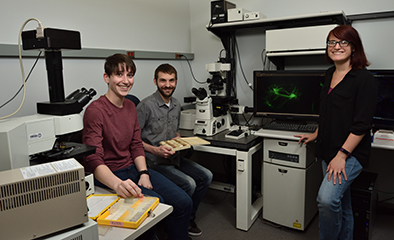CBMP Faculty
Partha Dutta, DVM, Ph.D.

Department: Vascular Medicine Institute
Email: duttapa@pitt.edu
PubMed: Link
Dept / Lab Webpage: https://duttalab.pitt.edu/
CBMP groups: Cell Communication, Signaling and Ion Channel Biology, Cellular Injury, Wound Healing, Aging and Tissue Regeneration
Research Interests
Cardiovascular disease is the leading cause of death in developed countries. Inflammation aggravates outcome of cardiovascular disease including atherosclerosis and infarct healing after myocardial infarction (MI) (Leuschner* and Dutta* et al., Nature Biotechnology, 2011). During progression of atherosclerosis, myeloid cells destabilize lipid-rich plaques in the arterial wall and cause their rupture, thus triggering myocardial infarction and stroke. Survivors of acute coronary syndromes have a high risk of recurrent events for unknown reasons.
We showed that the systemic response to ischemic injury aggravates chronic atherosclerosis (Dutta et al., Nature, 2012). After myocardial infarction or stroke, Apoe-/- mice developed larger atherosclerotic lesions with a more advanced morphology and inflammation. This disease acceleration persisted over many weeks and was associated with markedly increased monocyte recruitment.
Hematopoietic stem cells get activated after acute or chronic inflammation and give rise to exaggerated myelopoiesis. However, most hematopoietic stem cells (HSC) are quiescent, and it is currently unknown whether they respond to ischemic organ injury. We identified a CCR2+ HSC subset, which has fourfold higher proliferative rate than CCR2- HSC, as the most upstream contributor to myelopoiesis after myocardial infarction (Dutta et al., Cell Stem Cell, 2015). CCR2+ HSC display bias towards the myeloid lineage and dominate the migratory HSC population after myocardial infarction and in steady-state. The myeloid translocation gene 16 (Mtg16) regulates the emergence of CCR2+ HSC from CCR2- HSC. These data shed new light on the regulation of emergency hematopoiesis after ischemic injury and identify novel therapeutic targets to modulate leukocyte output after myocardial infarction.
Additionally, we found that myocardial infarction drives splenic hematopoietic stem cells into the cell cycle resulting in production of myeloid cells at the extramedullary site (Dutta et al., Journal of Experimental Medicine, 2015). Moreover, splenic HSC are retained by VCAM-1+ splenic macrophages.
